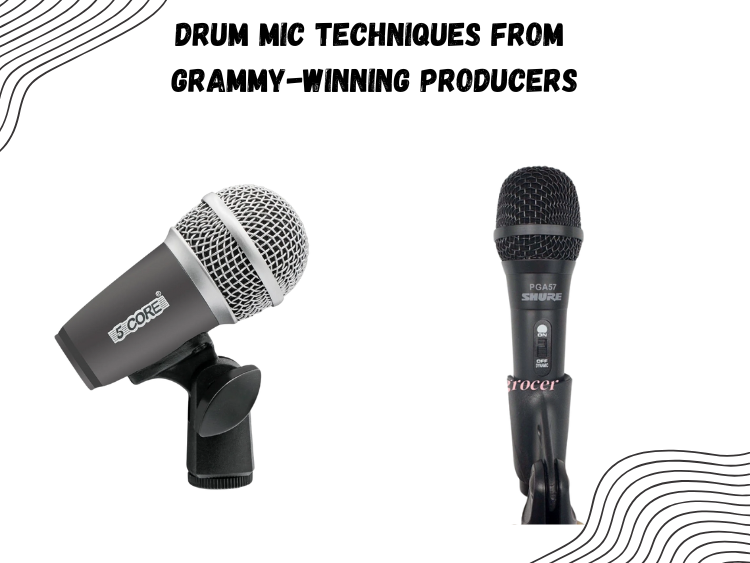When you hear a Grammy-winning track, you’re not just listening to a great drummer. You’re hearing years of refined technique—right down to the microphone angles. Producers who consistently win know how to capture drums that feel alive, sit tight in the mix, and translate on every system from earbuds to vinyl. Here’s how they do it, without the guesswork.
1. Start with the Shells, Not the Mics
Before a single mic gets placed, these producers focus on the drums themselves. Are the heads tuned properly? Are the shells resonating cleanly? A dull-sounding tom won’t suddenly shine with a $2,000 condenser.
Mics don’t fix tone. They frame it.
That’s why award-winning producers only mic once the kit sounds great in the room. They know everything downstream depends on this.
2. Kick It Right—Two Mic Rule
The classic approach still dominates: one mic inside the kick for punch, one outside for body. Inside, it’s often something like a D112 or Beta 52A aimed right at the beater. Outside, a large-diaphragm condenser or subkick pulls in that deep low-end.
Want something more budget-friendly but stage-ready? A kit like the 5 Core 7-Piece Drum Mic Set gets you versatile dynamics for kick, toms, and snare—no need to piece things together.
Interestingly, 5 Core even provides great discounts to business owners if you’re buying in bulk. Refer to this site for more information. Here’s also a one-stop platform where you can find all their products.
3. Snare? All About the Sweet Spot
Grammy-level snares sound crisp, full, and never boxy. The trick? Mic placement. Angle the mic just off-center toward the edge—not dead center. This catches the crack without too much midrange. Add a bottom mic for extra snap, but always flip the phase.
One producer famously said: “The snare owns the track. Treat it like the lead vocal.” Enough said.
4. Toms: Isolation Wins
Toms in Grammy mixes don’t feel like afterthoughts. They roar, resonate, and have space to breathe. That’s why close-miking each tom—using short-body dynamics with tight cardioid patterns—is the go-to.
One favorite? Clip-on tom mics that stay locked in position even during the most chaotic sessions. Mics like these drum dynamics with secure clamps help prevent bleed while keeping placement consistent between takes.
5. Overheads Are the Mix Glue
This is where things get surgical. Grammy producers don’t just slap up a pair of overheads and call it a day. They use them to balance the image—not just capture cymbals.
Many go with a spaced pair or ORTF, slightly favoring the ride side for stereo spread. Ribbon mics sometimes get the call here for a softer high-end, especially on aggressive rock or jazz sessions. The result? A top end that breathes, not screeches.
6. Room Mics Aren’t Optional
One hallmark of Grammy-worthy drum sound? Depth. And it doesn’t come from close mics alone. Room mics—placed strategically far from the kit—capture the ambience that makes drums feel real.
Some producers aim a pair of condensers at the corners of the room. Others go mono and crush the signal through heavy compression. Either way, room mics give the drums their size. Without them, you’re mixing in two dimensions.
7. Commit with Compression
Producers who win awards don’t babysit levels. They commit to compression on the way in—especially on kick, snare, and rooms. Fast attacks tame peaks. Medium releases bring up body. Bus compression glues it all together before it even hits the DAW.
It’s not about smashing the signal—it’s about locking it in.
Final Thought
Grammy-winning producers aren’t chasing trends. They’re executing proven methods with ruthless precision. It’s not magic. It’s mic placement, phase awareness, and knowing what the song needs.
Want that Grammy drum sound? Mic like they do. Track with intent. And above all—respect the kit before you ever hit record.




